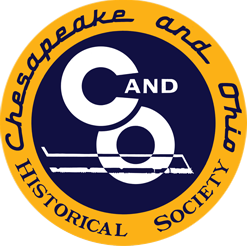

$10.95
Chesapeake & Hocking Railway: Interstate Commerce (Later C&O Northern Subdivision)
This pamphlet reproduces the summary report prepared by the Interstate Commerce Commission in 1927 giving a history and data on the Chesapeake & Hocking Railway. This was a subsidiary company incorporated by C&O to facilitate building of the line from the Waverly to Columbus, Ohio. This was the final link in creating the C&O’s “Northern Subdivision” that linked the Cincinnati Division main line with the Hocking Valley Railway at Columbus, and allowed the C&O its own route to the Great Lakes. Before building of the C&H, C&O trains had to operate over N&W lines from Waverly to Columbus, an arrangement that eventually proved unsatisfactory.
Congress mandated a valuation of all American railroads in 1913 with the aim of fixing a value of their physical plants and rolling stock/motive power, so as to ensue that rate setting was fair and that the railroads were receiving adequate compensation for their capital expenditures, and at the same time to ensure that exorbitant rates were not being charged. This was the age win which railroads were essentially monopolies of transportation. The valuation for C&O was mae in 1916, but as new elements were added to the system updates were made.
52 pgs.
Chesapeake & Hocking Railway: Interstate Commerce (Later C&O Northern Subdivision)
This pamphlet reproduces the summary report prepared by the Interstate Commerce Commission in 1927 giving a history and data on the Chesapeake & Hocking Railway. This was a subsidiary company incorporated by C&O to facilitate building of the line from the Waverly to Columbus, Ohio. This was the final link in creating the C&O’s “Northern Subdivision” that linked the Cincinnati Division main line with the Hocking Valley Railway at Columbus, and allowed the C&O its own route to the Great Lakes. Before building of the C&H, C&O trains had to operate over N&W lines from Waverly to Columbus, an arrangement that eventually proved unsatisfactory.
Congress mandated a valuation of all American railroads in 1913 with the aim of fixing a value of their physical plants and rolling stock/motive power, so as to ensue that rate setting was fair and that the railroads were receiving adequate compensation for their capital expenditures, and at the same time to ensure that exorbitant rates were not being charged. This was the age win which railroads were essentially monopolies of transportation. The valuation for C&O was mae in 1916, but as new elements were added to the system updates were made.
52 pgs.
| Media type | Printed, CD |
|---|
| Availability |
Now available in-store at 312 E. Ridgeway St Clifton Forge 24422 Powered With Oliver Pos |
|---|
